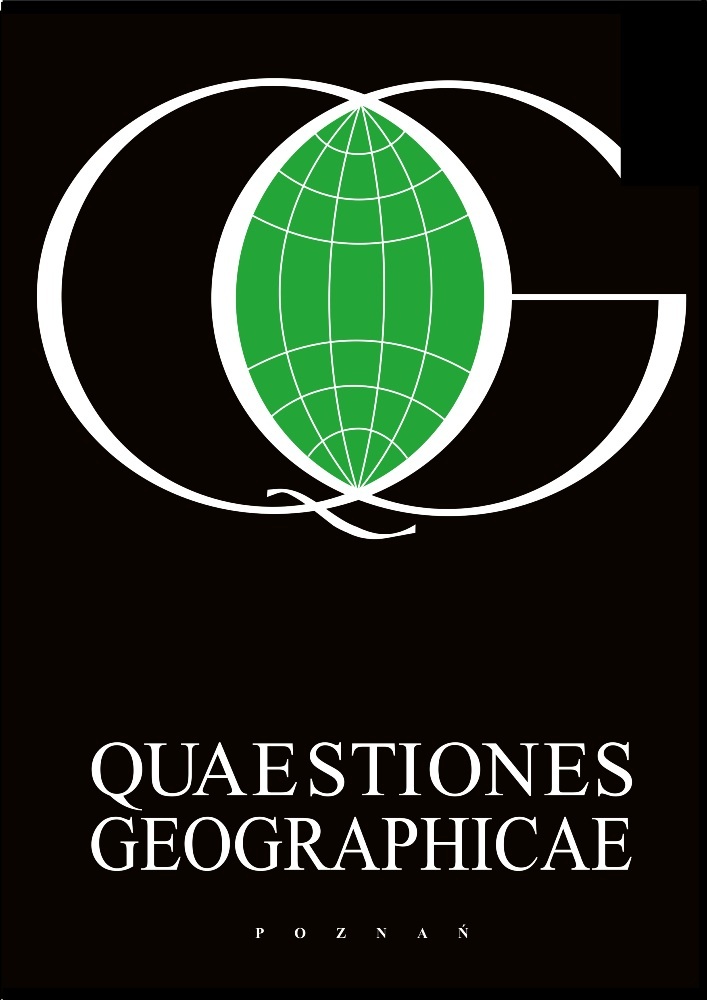Abstract
This study gives an analysis of the diversification of the demographic situation in the rural areas of Ukraine in the years 1992-2011 in a regional depiction (it corresponds to the NUTS 2 division applied in the European Union). The demographic situation of the rural population is undergoing increasingly distinct deterioration. It is the worst in central Ukraine and relatively the best in its western part. This is an effect of political, economic and social processes initiated in today’s Ukraine after World War One. It overlaps with negative effects of the processes of political transformation taking place in already independent Ukraine. The chances of improving the demographic situation in rural areas are rather slim and depend on two factors: (1) a fundamental change in the state policy towards the Ukrainian countryside and (2) overcoming a prolonged socio-economic crisis.
References
Bátorová S., 1999. Regionálna diferencovanosť dynamiky obyvateľstva Nitrianskeho Kraja (Regional diversification of the dynamics of the population of the Nitra region). Acta Facultatis Studiorum Humanintatis et Naturale Univeristatis Prešoviensis. Prírodné vedy, XXXII. Folia geographica 3: 5-18.
Cudny W., 2012. Socio-economic transformation of small towns in East Germany after 1990 - Colditz case study. Bulletin of Geography. Socio-economic Series 17: 33-45.
Dnìstrâns´kij M.S., 2008. Etnogeografìâ Ukraїni (Ethnic geography of Ukraine). Widawničij centr LNU ìmenì Ìwana Franka, L’vìv.
Flaga M., 2006. Procesy demograficzne oraz ich uwarunkowania w zachodnich obwodach Ukrainy w okresie przemian ustrojowych (Demographic processes and their determinants in the western oblasts of Ukraine in the period of the political transformation). Wydawnictwo Uniwersytetu Marii Curie-Skłodowskiej. Lublin.
Grykień S., 2004. Przekształcenia w rolnictwie Europy Środkowo- Wschodniej ze szczególnym uwzględnieniem nowych krajów związkowych Niemiec, Polski i Ukrainy (Transformations in East-Central European agriculture, with special focus on the new federated states of Germany, Poland and Ukraine). Wydawnictwo Uniwersytetu Wrocławskiego, Wrocław.
Grzelak-Kostulska E., 2001. Przemiany w strukturze i procesach demograficznych na obszarze województwa kujawskopomorskiego (Changes in the structure and demographic processes in Kujavia-Pomerania voivodeship). Wydawnictwo Uniwersytetu Mikołaja Kopernika, Toruń.
Kotowska I.E., Jóźwiak J. (eds), 2003. Population in Central and Eastern Europe: Challenges and opportunities. Statistical Publishing Establishment, Warsaw.
Kučabs´kij O., 2010. Admìnìstratiwno-teritorìal´na organìzacìâ Ukraїni: teorìâ, metodologìâ, mehanìzmi stanowlenìâ (Administrative- territorial organisation of Ukraine: theory, methodology, mechanisms of development). Widawnictwo LRIDU NADU, L’vìv.
Matlovič R., 2005, Geografia obywateľstva Slovenska so zreteľom Rómsku minoritu (Geography of the population of Slovakia with special focus on the Gypsy minority). Fakulta humanitných a prorodný vied. Prešovká univerzita v Prešove, Prešov.
Michalski T., 2010. Sytuacja zdrowotna w europejskich krajach postkomunistycznych w dobie transformacji (Health situation in the European post-communist countries in the age of transformation). Wydawnictwo Uniwersytetu Gdańskiego, Gdańsk.
Michalski T., 2012a. Przemiany w umieralności w Europie Środkowej i Środkowo-Wschodniej w okresie transformacji (Changes in mortality in Central and East-Central Europe in the age of transformation). Wydawnictwo Bernardinum, Pelplin.
Michalski T., 2012b, Przemiany w liczbie ludności i ruchu rzeczywistym w Europie Środkowej i Środkowo-Wschodniej w okresie transformacji (Changes in the population number and population change in Central and East-Central Europe in the age of transformation). Wydawnictwo Bernardinum, Pelplin.
Mihal´skì T., 2007. Depopulacìâ w ewropejs´kih postkomunìstičnih deržawah âk plata za transformacìjnì procesi (Depopulation in the European post-communist countries as the cost of transformation processes). In: Šablìj O. (ed.), Teoretičnì ta metodologìčnì problem suspìlnoї. Widawničij centr LNU ìmenì Ìwana Franka, L’vìv: 255-264.
Olujko W.M., Slobodânûk P.Â., Baûk M.Ì., 2005. Admìnìstratiwno- teritorìal´nij ustrìj Podìllâ. Ìstorìâ ì sučasnìst´ (Administrative- territorial system of Podole. The history and the present). Widawnictwo UAP, Hmel’nic’kij.
Pawlow O., 2005. Sìl´s´kì teritorìї âk ob’iekt deržawnogo uprawlìnnâ (Rural areas as an object of civil service). Ûridičeskij westnik 1: 107-111.
Prokopa I., 1998, Sìl´s´kì poselennâ w sistemì mìscewogo samowrâduwannâ (Rural settlements in the system of local territorial self-government). Prawo Ukraїni 7: 12-14.
Staşac M., Albu I., Stupariu M.I., 2010. The geo-demographic dimension of Romanian rural space. Bulletin of Geography. Socio-economic Series 13: 19-31.
Stefanišin O., 2006. Lûds´kij potencìal ekonomiki Ukraїni (Human potential in the economy of Ukraine). Widawničij centr LNU ìmenì Ìwana Franka, L’vìv.
Szymańska D., Biegańska J., Gil A., 2009. Rural areas in Poland in the context of changes in the population’s age structure in 1996, 2001 and 2006. Bulletin of Geography. Socio-economic Series 12: 91-107. The State Statistics Service of Ukraine, http://www.ukrstat.gov (accessed 29 November 2012).
Uzzoli A., 2006. The spatial structure of health inequalities in Europe. Geographical Forum 5(5): 101-103.
Yelsukov M., Kashina M., Klyuyev A., 2010. The demographic problems of the Pskov region and the main approaches to solving them at the level of regional state authorities. Baltic Region 4(6): 26-36.
License
This content is open access.
